Blog
Frank Wright (July 9, 1935 – May 17, 1990) was an American free jazz musician, known for his frantic style of playing the tenor saxophone. Critics often compare his music to that of Albert Ayler, although Wright “offers his honks and squawks with a phraseology derived from the slower, earthier funk of R&B and gospel music.” According to AllMusic biographer Chris Kelsey, Wright “never recorded even a single record under his own name for a major label; he was ‘underground’ his entire career.” In addition to tenor saxophone, Wright also played the soprano saxophone and bass clarinet.
Wright was born in Grenada, Mississippi, United States, and grew up in Memphis, Tennessee and Cleveland, Ohio, where he began his musical career playing bass guitar, backing artists such as Rosco Gordon, Bobby “Blue” Bland, and B.B. King. He switched to tenor saxophone after meeting Albert Ayler in Cleveland, Ayler’s hometown. In 1964, Wright moved to New York City, where he played with Larry Young, Noah Howard, and Sunny Murray. He also sat in with John Coltrane and, in early 1965, was invited to participate in the recording of Ascension, but reportedly felt that his skills were not up to the demands of the music. (Later, however, Wright stated “what I do is countersigned by master John Coltrane who accepted me at this side by calling me ‘little brother’.”
more...
Stickney Crater, the largest crater on the martian moon Phobos, is named for Chloe Angeline Stickney Hall, mathematician and wife of astronomer Asaph Hall. Asaph Hall discovered both the Red Planet’s moons in 1877. Over 9 kilometers across, Stickney is nearly half the diameter of Phobos itself, so large that the impact that blasted out the crater likely came close to shattering the tiny moon. This enhanced-color image of Stickney and surroundings was recorded by the HiRISE camera onboard the Mars Reconnaissance Orbiter as it passed within some six thousand kilometers of Phobos in March of 2008. Even though the surface gravity of asteroid-like Phobos is less than 1/1000th Earth’s gravity, streaks suggest loose material slid down inside the crater walls over time. Light bluish regions near the crater’s rim could indicate a relatively freshly exposed surface. The origin of the curious grooves along the surface is mysterious but may be related to tidal stresses experienced by close-orbiting Phobos or the crater-forming impact itself.

more...
John Lee Johnson (born July 8, 1944 Ocean Springs, MS), frequently known by the stage names Jai Johanny Johanson and Jaimoe, is an American drummer and percussionist.[1][2] He is best known as one of the founding members of the Allman Brothers Band.
Johanson played with a number of Muscle Shoals and Memphis soul acts in the early-to-mid 1960s, such as Otis Redding and Sam and Dave, as a session and touring drummer. While recording and touring he would meet the various members of what would become the Allman Brothers Band. One of the few bands at the time to employ two drummers, alongside Butch Trucks they drew on R&B, blues, jazz, country, and rock to create a unique variety of southern rock. Upon the death of founding bassist Berry Oakley in 1972, Johanson brought in frequent collaborator Lamar Williams to replace him. While on hiatus from the Allman Brothers Band in the late 1970s, he formed the band Sea Level around a core of former Allman Brother Band members including Williams and pianist/vocalist Chuck Leavell. He briefly rejoined the Allman Brothers in 1979, but left again in 1980 due to back problems, and spent much of the 1980s playing in local Macon, Georgia-area bands. He rejoined the Allman Brother Band in 1989, as the band transitioned from a southern rock sound to a more jam band feel, having added a third drummer/percussionist Marc Quiñones. The band continued to perform until formally retiring in 2014. Johanson has since fronted his own jazz outfit, Jaimoe’s Jasssz Band, and appeared with former Allman Brothers Band members for one-off reunions and in a number of different side projects.
Along with the other members of the Allman Brothers Band, Johanson was inducted into the Rock and Roll Hall of Fame in 1995. As of 2023, he and guitarist Dickey Betts are the two surviving original members of the Allman Brothers Band.
more...Johnnie Clyde Johnson (July 8, 1924 – April 13, 2005) was an American pianist who played jazz, blues, and rock and roll. His work with Chuck Berry led to his induction into the Rock and Roll Hall of Fame. He was posthumously awarded the Congressional Gold Medal for breaking racial barriers in the military as a Montford Point Marine, where he endured racism and inspired social change while integrating the previously all-white Marine Corps during World War II.
Johnson was born in Fairmont, West Virginia, United States. He began playing the piano in 1928. During World War II, he joined the United States Marine Corps and became a member of Bobby Troup‘s all-serviceman jazz orchestra: the Barracudas. After his service, Johnson moved to Detroit and then Chicago, where he sat in with many notable artists, including Muddy Waters and Little Walter.
more...Louis Thomas Jordan (July 8, 1908 – February 4, 1975 Brinkley, AK) was an American saxophonist, multi-instrumentalist, songwriter and bandleader who was popular from the late 1930s to the early 1950s. Known as “the King of the Jukebox“, he earned his highest profile towards the end of the swing era. He was inducted into the Rock and Roll Hall of Fame as an “early influence” in 1987.
Specializing in the alto sax, Jordan played all forms of the saxophone, as well as piano and clarinet. He also was a talented singer with great comedic flair, and fronted his own band for more than twenty years. He duetted with some of the biggest solo singing stars of his time, including Bing Crosby, Ella Fitzgerald and Louis Armstrong.
Jordan was also an actor and a film personality. He appeared in 14 three-minute Soundies filmed for “movie jukeboxes” of the 1940s. He also worked as a specialty act in the Hollywood theatrical features Follow the Boys and Swing Parade of 1946. His very successful musical short Caldonia (1945) prompted three more feature films, all starring Jordan and his band: Beware; Reet, Petite and Gone; and Look Out Sister.
Jordan began his career in big-band swing jazz in the 1930s, but he became known as an innovative popularizer of jump blues, a swinging, up-tempo, dance-oriented hybrid of jazz, blues and boogie-woogie. Typically performed by smaller bands consisting of five or six players, jump music featured shouted, highly syncopated vocals and earthy, comedic lyrics on contemporary urban themes. It strongly emphasized the rhythm section of piano, bass and drums; after the mid-1940s, this mix was often augmented by electric guitar. Jordan’s band also pioneered the use of the electronic organ.
With his dynamic Tympany Five bands, Jordan mapped out the main parameters of the classic R&B, urban blues and early rock-and-roll genres with a series of highly influential 78-rpm discs released by Decca Records. These recordings presaged many of the styles of black popular music of the late 1940s, 1950s and 1960s and exerted a strong influence on many leading performers in these genres. Many of his records were produced by Milt Gabler, who went on to refine and develop the qualities of Jordan’s recordings in his later production work with Bill Haley, including “Rock Around the Clock“.
Jordan ranks fifth in the list of the most successful African-American recording artists according to Joel Whitburn‘s analysis of Billboard magazine’s R&B chart, and was the most popular rhythm and blues artist with his “jump blues” recordings of the pre-rock n’ roll era. Though comprehensive sales figures are not available, he had at least four million-selling hits during his career. Jordan regularly topped the R&B “race” charts, achieving the Number 1 slot eighteen times, with 113 weeks in that spot over the years. He was also one of the first black recording artists to achieve significant crossover in popularity with the predominantly white mainstream American audience, having simultaneous Top Ten hits on the pop charts on several occasions.
more...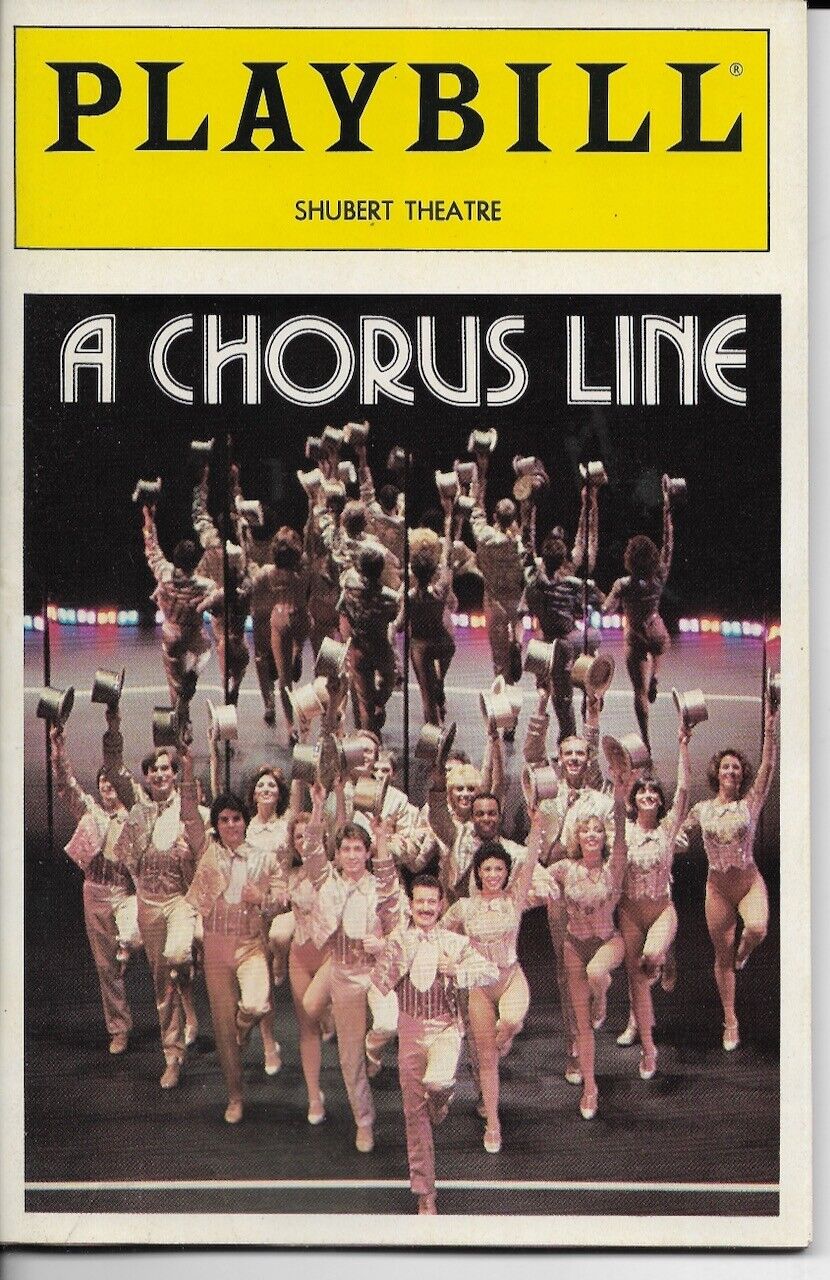
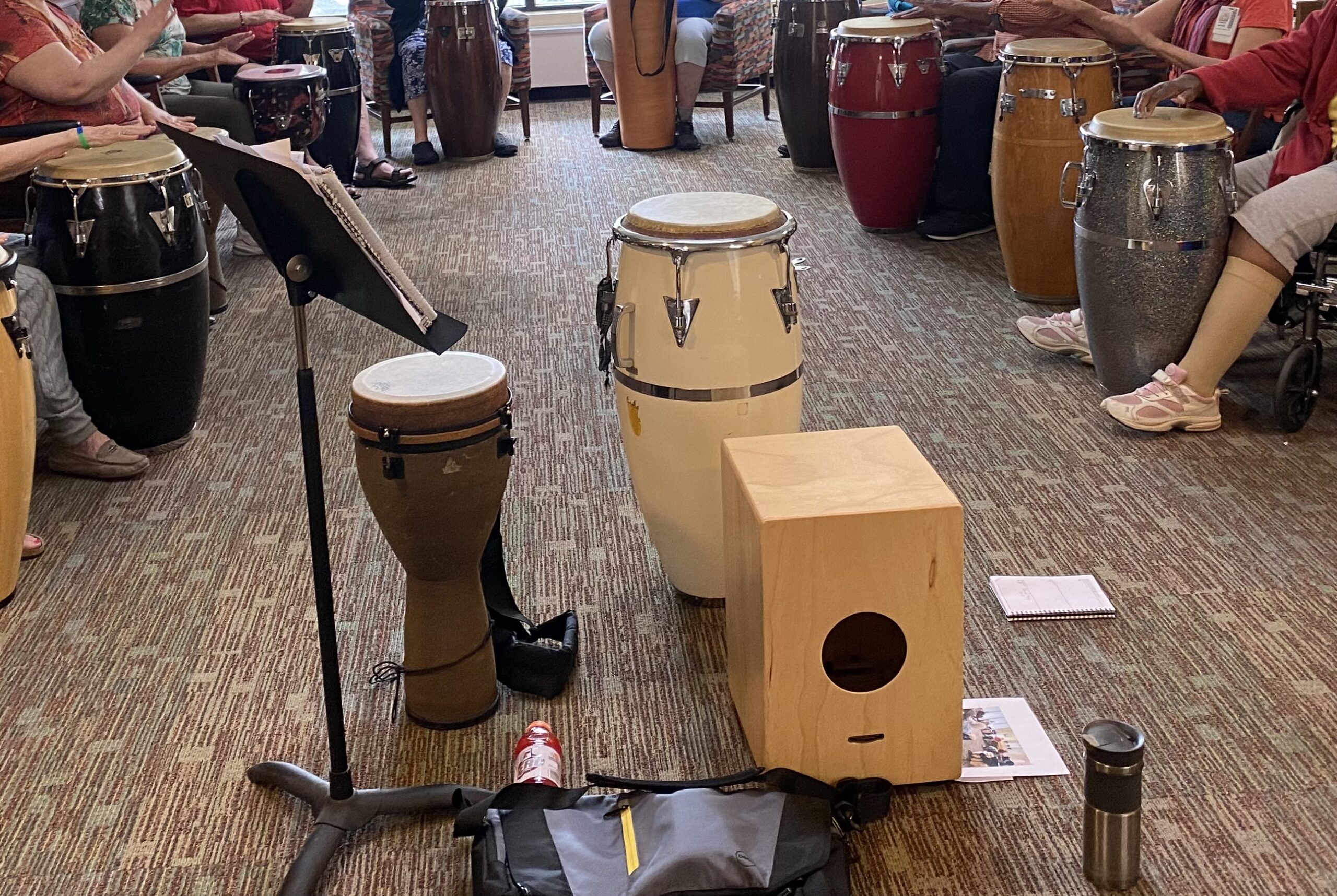
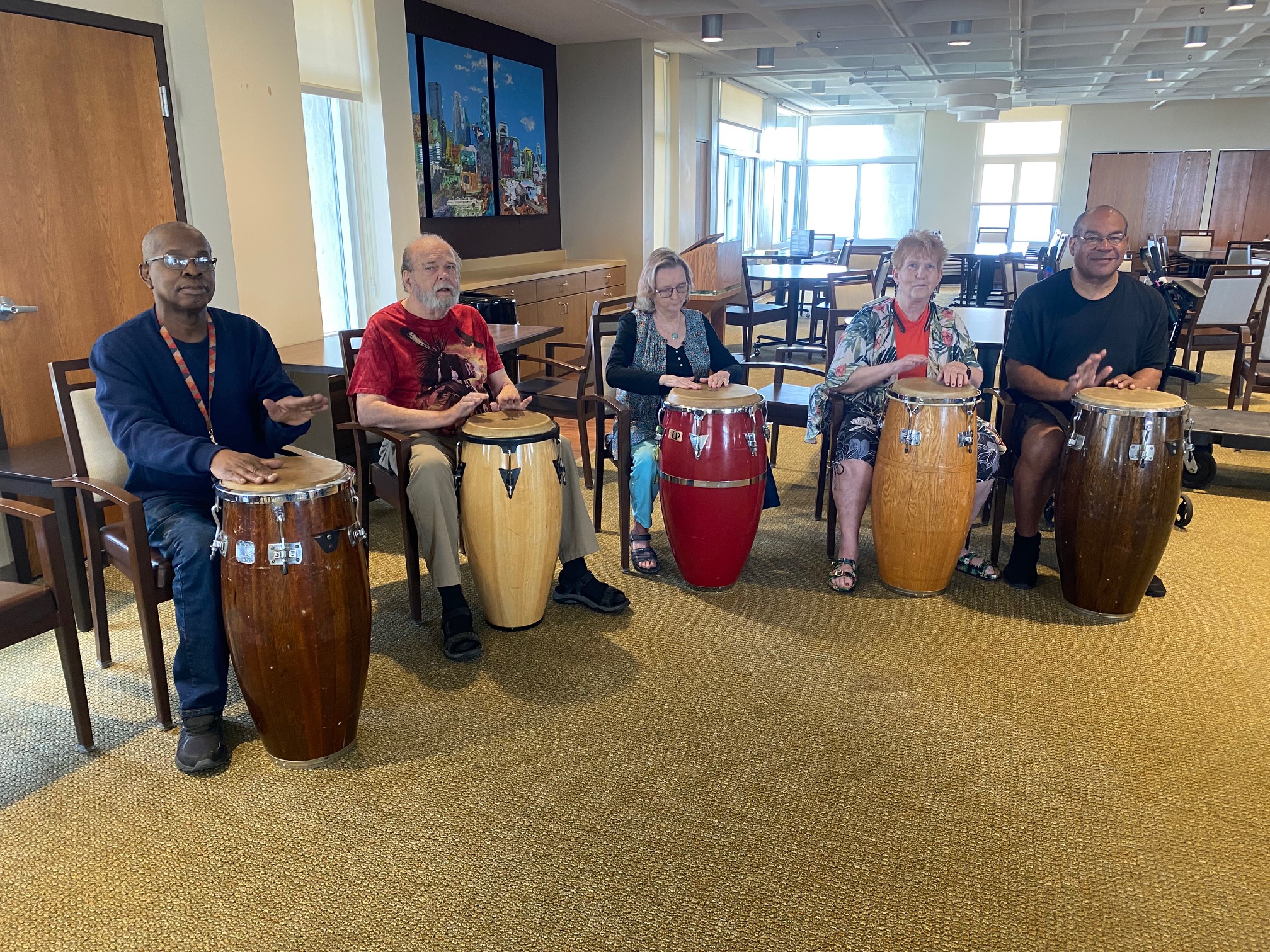
NGC 869 spans about three full moons (1.5 degrees) across the heroic northern constellation of Perseus. It holds the famous pair of open star clusters, h and Chi Persei. Also cataloged as NGC 869 (top) and NGC 884, both clusters are about 7,000 light-years away and contain stars much younger and hotter than the Sun. Separated by only a few hundred light-years, the clusters are both 13 million years young based on the ages of their individual stars, evidence that they were likely a product of the same star-forming region. Always a rewarding sight in binoculars, the Double Cluster is even visible to the unaided eye from dark locations.
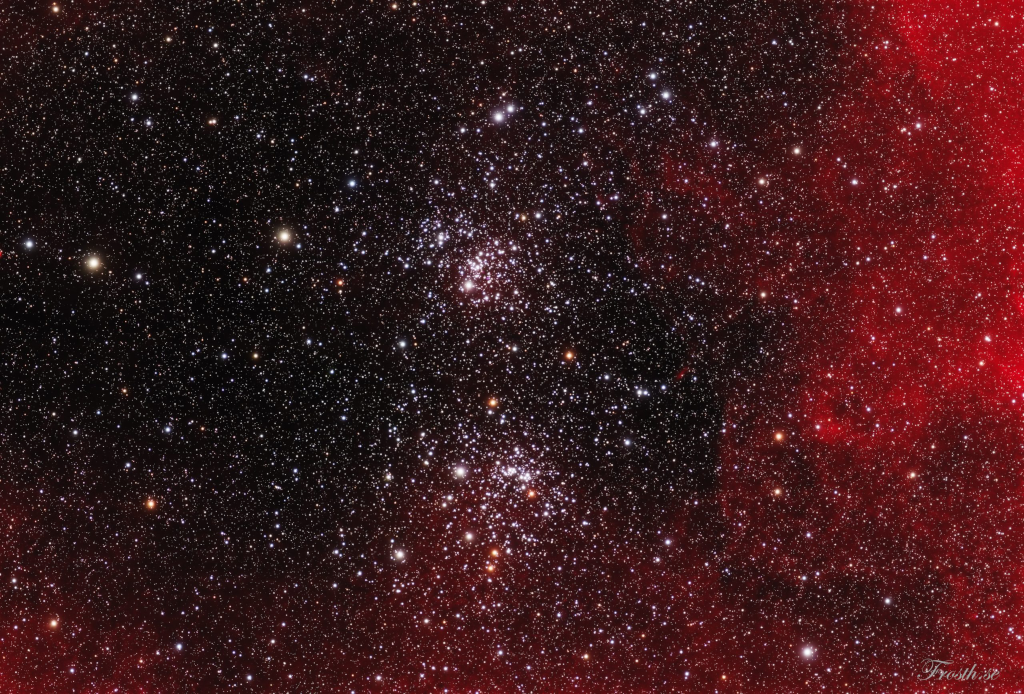
Sir Richard Starkey MBE (born 7 July 1940), known professionally as Ringo Starr, is an English musician, songwriter and actor who achieved international fame as the drummer for the Beatles. Starr occasionally sang lead vocals with the group, usually for one song on each album, including “Yellow Submarine” and “With a Little Help from My Friends“. He also wrote and sang the Beatles songs “Don’t Pass Me By” and “Octopus’s Garden“, and is credited as a co-writer of four others.
Starr was afflicted by life-threatening illnesses during childhood, with periods of prolonged hospitalisation. He briefly held a position with British Rail before securing an apprenticeship as a machinist at a Liverpool school equipment manufacturer. Soon afterwards, Starr became interested in the UK skiffle craze and developed a fervent admiration for the genre. In 1957, he co-founded his first band, the Eddie Clayton Skiffle Group, which earned several prestigious local bookings before the fad succumbed to American rock and roll around early 1958. When the Beatles formed in 1960, Starr was a member of another Liverpool group, Rory Storm and the Hurricanes. After achieving moderate success in the UK and Hamburg, he quit the Hurricanes when he was asked to join the Beatles in August 1962, replacing Pete Best.
In addition to the Beatles’ films, Starr has acted in numerous others. After the band’s break-up in 1970, he released several successful singles including the US top-ten hit “It Don’t Come Easy“, and number ones “Photograph” and “You’re Sixteen“. His most successful UK single was “Back Off Boogaloo“, which peaked at number two. He achieved commercial and critical success with his 1973 album Ringo, which was a top-ten release in both the UK and the US. Starr has featured in numerous documentaries, hosted television shows, narrated the first two series of the children’s television program Thomas & Friends and portrayed “Mr. Conductor” during the first season of the PBS children’s television series Shining Time Station. Since 1989, he has toured with thirteen variations of Ringo Starr & His All-Starr Band.
Starr’s playing style, which emphasised feel over technical virtuosity, influenced many drummers to reconsider their playing from a compositional perspective. He also influenced various modern drumming techniques, such as the matched grip, tuning the drums lower, and using muffling devices on tonal rings. In his opinion, his finest recorded performance was on the Beatles’ “Rain“. In 1999, he was inducted into the Modern Drummer Hall of Fame. In 2011, Rolling Stone readers named him the fifth-greatest drummer of all time. He was inducted twice into the Rock and Roll Hall of Fame, as a Beatle in 1988 and as a solo artist in 2015, and appointed a Knight Bachelor in the 2018 New Year Honours for services to music. In 2020, he was cited as the wealthiest drummer in the world, with a net worth of $350 million.
more...Josef Erich Zawinul 7 July 1932 – 11 September 2007) was an Austrian jazz and jazz fusion keyboardist and composer. First coming to prominence with saxophonist Cannonball Adderley, Zawinul went on to play with Miles Davis and to become one of the creators of jazz fusion, a musical genre that combined jazz with rock. He co-founded the groups Weather Report and The Zawinul Syndicate. He pioneered the use of electric piano and synthesizer, and was named “Best Electric Keyboardist” twenty-eight times by the readers of DownBeat magazine.
Zawinul grew up in Vienna, Austria. Accordion was his first instrument. When he was six or seven, he studied clarinet, violin, and piano at the Vienna Conservatory (Konservatorium Wien). During the 1950s he was a staff pianist for Polydor. He worked as a jazz musician with Hans Koller, Friedrich Gulda, Karl Drewo, and Fatty George. In 1959 he moved to the U.S. to attend Berklee College of Music, but a week later he received a job offer from Maynard Ferguson, so he left school and went on tour. He then accompanied Dinah Washington. He spent most of the 1960s with Cannonball Adderley.
more...Henry “Hank” Mobley (July 7, 1930 – May 30, 1986) was an American hard bop and soul jazz tenor saxophonist and composer. Mobley was described by Leonard Feather as the “middleweight champion of the tenor saxophone”, a metaphor used to describe his tone, that was neither as aggressive as John Coltrane nor as mellow as Lester Young, and his style that was laid-back, subtle and melodic, especially in contrast with players like Coltrane and Sonny Rollins. The critic Stacia Proefrock claimed him “one of the most underrated musicians of the bop era.” Mobley’s compositions included “Double Exposure,” “Soul Station”, and “Dig Dis,” among others.
Mobley was born in Eastman, Georgia, but was raised in Elizabeth, New Jersey, near Newark. He described himself as coming from a musical family and spoke of his uncle playing in a jazz band. As a child, Mobley played piano.
more...Lloyd “Tiny” Grimes (July 7, 1916 – March 4, 1989) was an American jazz and R&B guitarist. He was a member of the Art Tatum Trio from 1943 to 1944, was a backing musician on recording sessions, and later led his own bands, including a recording session with Charlie Parker. He is notable for playing the electric tenor guitar, a four-stringed instrument.
Grimes was born in Newport News, Virginia, United States, and began his musical career playing drums and one-fingered piano. In 1938 he took up the electric four-string tenor guitar. In 1940 he joined the Cats and the Fiddle as guitarist and singer. In 1943 he joined the Art Tatum Trio as guitarist and made a number of recordings with Tatum.
more...Types of flamenco tangos
Flamenco tangos would emerge at the turn of the century as a result of the combination of some elements of Andalusian jaleos, with a ternary beat, with the rhythm and beat of American tango. Thus a new genre was born, which would bring with it a list of new styles that enriched the repertoire of flamenco styles.
Other theories defend that the tangos before ‘aflamencarse’ were tientos, then accelerating the beat and became flamenco tangos.
In flamenco tangos we can find the melodic spirit of the soleá (in the singing) and the harmonica of the seguiriya (in the toque), and all this on a binary compass as a differentiating element.
Tangos have special characteristics, depending on the geographical area, in addition to which certain performers have given a personal stamp to certain styles of tangos.
Among the best known variants are:
Tangos from Cádiz.
Triana Tangos.
Tangos de Jerez.
Tangos from Malaga.
In addition to these tangos, there are other variants, although with less musical entity, with those of the Jaén tangos, those of Extremadura and those of Perchel.
Among the first known interpreters of flamenco tango we can highlight El Mellizo and Aurelio Sellésin Cádiz; El Titi, José Ortega and Pastora Pavón in Seville; Manuel Torres, El Mojama and Frijones in Jerez; and La Pirula, La Repompa and El Piyayo in Málaga.
more...The North America Nebula (NGC 7000 or Caldwell 20) is an emission nebula in the constellation Cygnus, close to Deneb (the tail of the swan and its brightest star). It is named because its shape resembles North America.
On October 24, 1786, William Herschel observing from Slough, England, noted a “faint milky nebulosity scattered over this space, in some places pretty bright.” The most prominent region was catalogued by his son John Herschel on August 21, 1829. It was listed in the New General Catalogue as NGC 7000, where it is described as a “faint, most extremely large, diffuse nebulosity.”
In 1890, the pioneering German astrophotographer Max Wolf noticed this nebula’s characteristic shape on a long-exposure photograph, and dubbed it the North America Nebula.
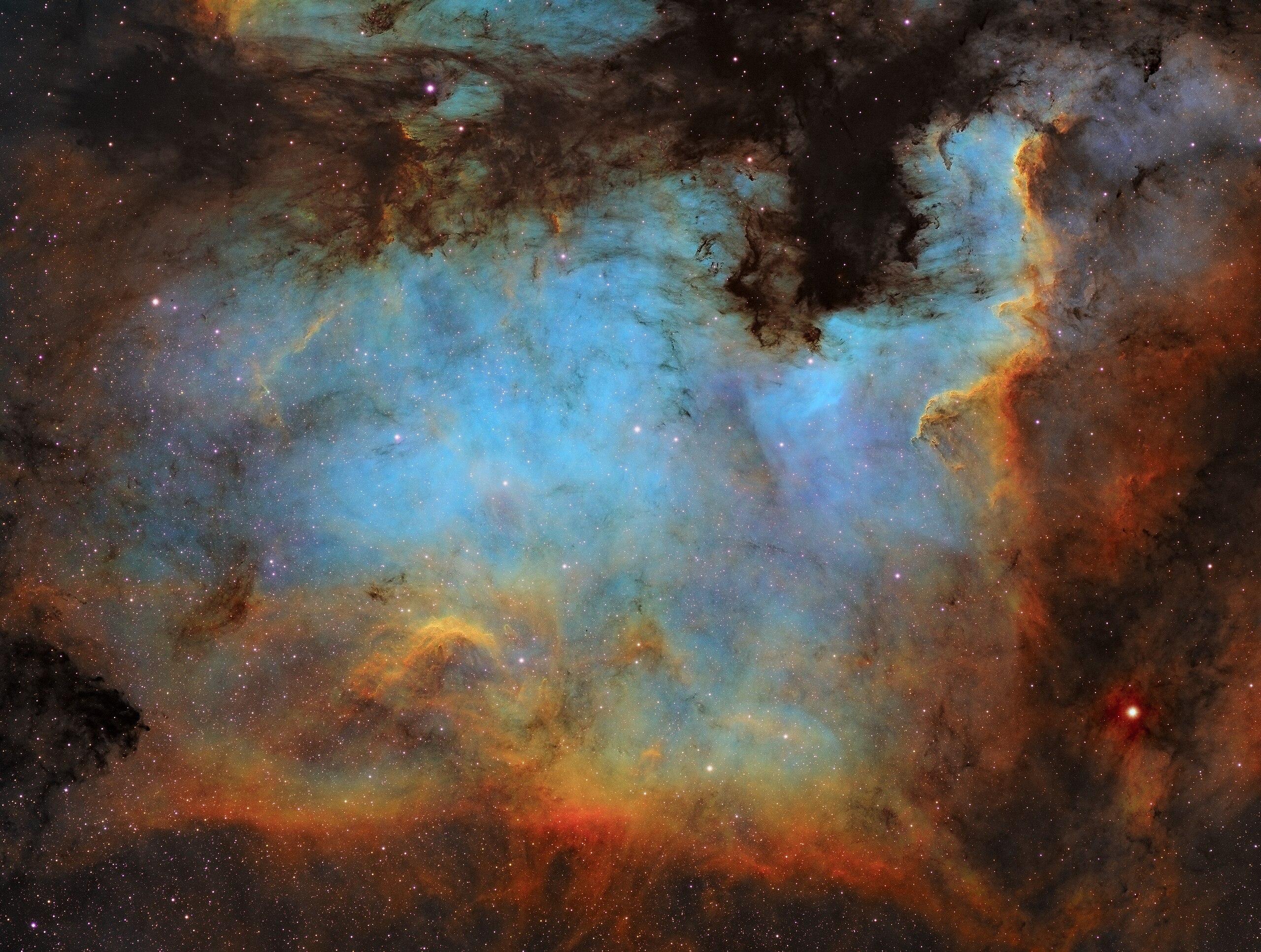
More Posts
- Happy Memorial Day 2019
- The Cosmos with the Milky Way & Volcan de Fuego
- Dee Dee Bridgewater Day
- Niels-Henning Orsted Pedersen Day
- Bud Shank Day
- World Music with Veronika Bulycheva
- Daily Roots with Karigan
- The Cosmos with UGC 10214
- Stevie Nicks Day
- Levon Helm Day
- Miles Davis Day
- Rubén González Day
- World Music with Aidys Norbu
- Daily Roots with Steel Pulse
- The Cosmos with NGC 7320
- Wallace Roney Day
- Jimmy Hamilton Day
- Bill “Bojangles” Robinson Day
- Pepe & mick
- World Music with At Adau